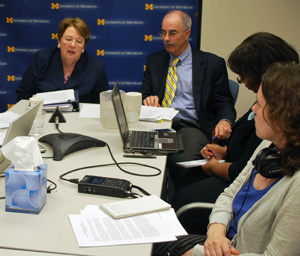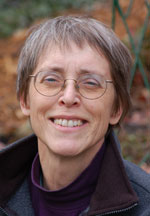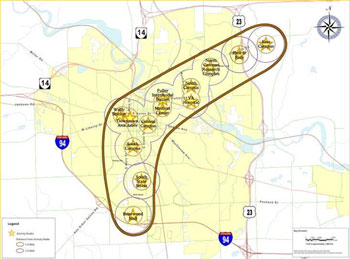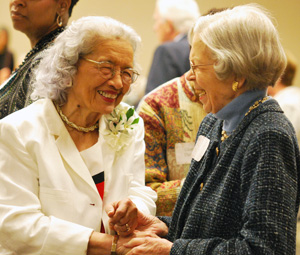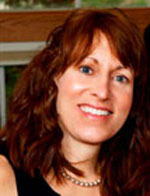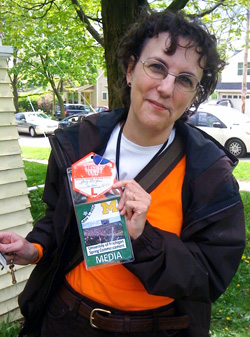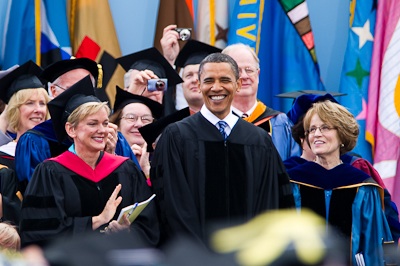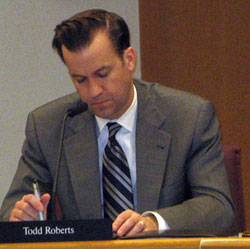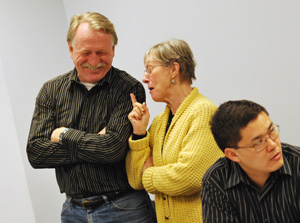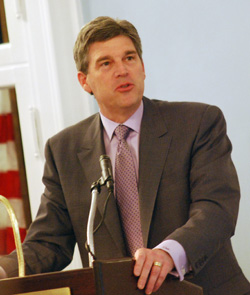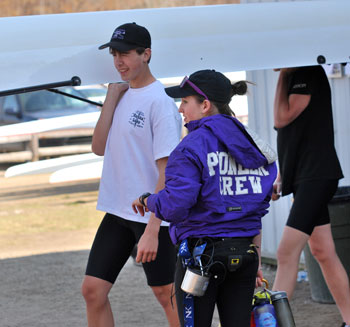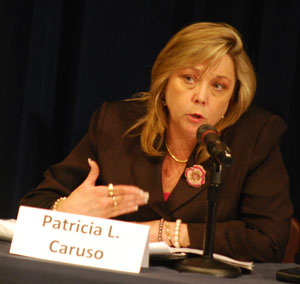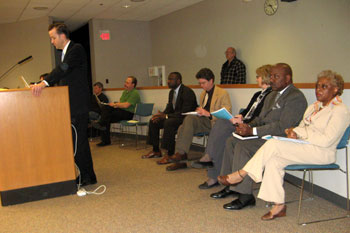AAPS Recalls Teachers, Lays Off Bus Drivers
Ann Arbor Public Schools Board of Education meeting (June 23, 2010): After an hour-long recess trying to wait out a tornado warning, the Ann Arbor Public Schools (AAPS) board of education conducted the last hour and 15 minutes of its Wednesday meeting in the basement of the downtown library. During its basement session, the board postponed three information items due to the storm, and moved directly to the action items on its agenda.

Board secretary Amy Osinski, center, and board president Deb Mexicotte, assessing the storm to determine how long to recess their meeting. Board secretary Glenn Nelson looks on from the right. (Photos by the writer.)
The board recalled all 191 laid-off teachers via the ratification of a new teacher contract, and authorized the layoffs of the entire AAPS transportation staff by contracting with Washtenaw Intermediate School District (WISD) to provide the district’s busing. AAPS bus drivers and other transportation staff can apply to WISD for jobs.
The board also renewed the district’s food service contract with Chartwells, received an update from state Rep. Pam Byrnes on Michigan’s Race to the Top efforts, and heard a report from The Neutral Zone’s Riot Youth on school climate as experienced by Lesbian, Gay, Bisexual, Transgender, Queer and Questioning (LGBTQQ) youth. [Full Story]




